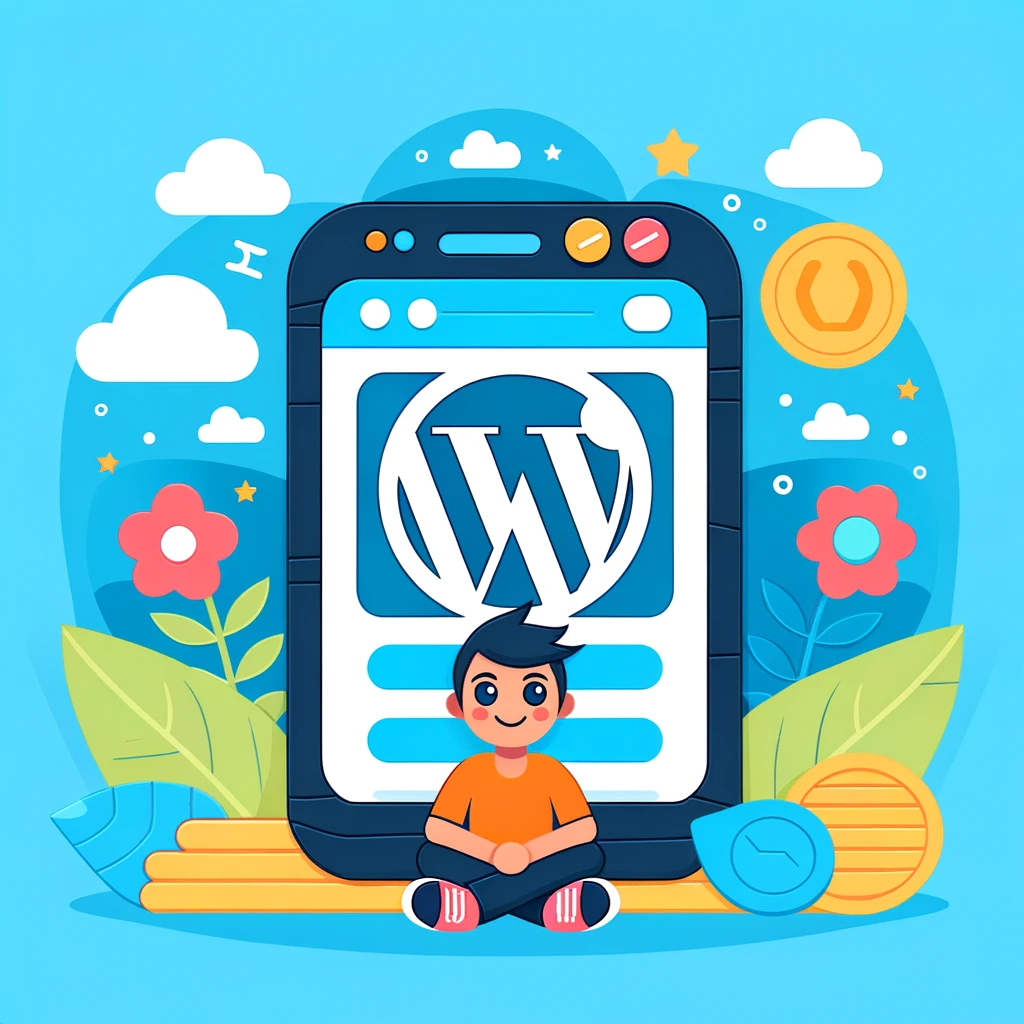Reading time: 14 minutes.
Introduction to WordPress vs Drupal
In the ever-evolving landscape of digital content management, two platforms have consistently stood out: WordPress and Drupal. These content management systems (CMS) are the backbone of millions of websites worldwide, powering everything from personal blogs to large corporate portals. However, despite their shared purpose in web development and content management, these two platforms have taken markedly different paths in their evolution and adoption. While Drupal has carved out a niche with its robust and flexible framework, appealing to developers and larger organizations, WordPress has soared in popularity, becoming the go-to choice for a vast array of users, from novices to skilled webmasters. This surge in popularity is not just a matter of chance. WordPress’s user-friendly approach, extensive customization options, and a strong community support system have played pivotal roles in its ascent. In this article, we’ll delve into the critical factors that have shaped the WordPress vs Drupal debate and why WordPress has emerged as the more dominant player in the CMS market.

Ease of Use: WordPress’s User-Friendly Approach
The cornerstone of WordPress’s widespread appeal lies in its remarkable ease of use. Designed with a user-centric philosophy, WordPress demystifies the process of website creation and management. Its dashboard is straightforward and intuitive, allowing even beginners to navigate effortlessly. Users can easily add new pages, posts, and media with a few clicks, and theme customization is straightforward with visual editors and pre-built templates. This simplicity extends to plugin installation and updates, making it manageable for users to enhance their website’s functionality without delving into complex coding.
Furthermore, the WordPress editor, with its ‘what you see is what you get’ interface, ensures that users can edit their content in a live, visual format, significantly reducing the learning curve and making website management an accessible task for all. This focus on simplicity and intuitive design is a key factor in WordPress’s dominance in the CMS market, appealing to a broad spectrum of users from hobby bloggers to small business owners.
Drupal’s Steeper Learning Curve

Drupal, in contrast to WordPress, presents a steeper learning curve that can be daunting for beginners and non-technical users. It’s built with a level of complexity and flexibility that caters primarily to developers and professionals with advanced technical skills. The administrative interface of Drupal is less intuitive than WordPress, often requiring a deeper understanding of its structure and terminology. For instance, creating and managing content, although highly customizable, involves navigating through a more complex system of modules and content types.
This complexity extends to theme customization and module management, where users frequently need to possess knowledge of HTML, CSS, and sometimes even PHP. While this steep learning curve allows for powerful and sophisticated website development, it also acts as a barrier to entry for those who lack the time or technical expertise to climb it. Consequently, Drupal’s user base tends to be concentrated among enterprises and advanced users who require a high degree of customization and control, and are equipped to navigate its intricate system.
Themes and Plugins: The Extensibility of WordPress
One of the most compelling features of WordPress is its remarkable extensibility, largely driven by an extensive array of themes and plugins. The platform boasts a vast repository of themes, ranging from simple and elegant designs to complex and feature-rich templates. These themes cater to a wide array of aesthetic preferences and functional requirements, allowing users to craft a unique look for their website with minimal effort. The ease with which themes can be customized, often with no coding required, empowers users to tailor their site’s appearance to their specific needs and brand identity.

Furthermore, WordPress’s plugin ecosystem is a powerhouse of functionality. With tens of thousands of plugins available, users can effortlessly add new features to their sites. From SEO optimization tools and social media integrations to e-commerce solutions and security enhancements, there is a plugin for virtually every conceivable need. This flexibility is a game-changer for users, enabling them to expand and adapt their websites as their needs evolve. The simplicity of installing and updating plugins, coupled with the sheer variety available, makes WordPress an incredibly versatile platform. Whether it’s a small personal blog or a large e-commerce site, WordPress plugins and themes provide the tools to build and maintain a dynamic, feature-rich online presence, catering to users of all skill levels and requirements.
Drupal’s Modules: Powerful but Less User-Friendly
While Drupal’s modules offer robust and versatile functionality, akin to WordPress’s plugins, they present a less user-friendly experience. These modules, integral for adding new features and customizing Drupal websites, offer immense power and flexibility for those who can navigate their complexities. However, the user experience in discovering, installing, and configuring these modules is notably more technical than in WordPress. Users often need a solid understanding of Drupal’s core systems and sometimes even require programming knowledge, particularly for more complex implementations.

This complexity, while a boon for developers seeking advanced customization, poses a significant challenge for average users. The learning curve associated with understanding and effectively utilizing Drupal’s modules can be steep, limiting its appeal to a more technically proficient audience. As a result, while Drupal’s modules are capable of transforming and enhancing a website in profound ways, they remain less accessible to the broader, non-developer user base.
Community and Support: WordPress’s Global Reach
The global reach of WordPress is significantly amplified by its vast and vibrant community, a key element in its success and appeal. This community, comprising millions of users, developers, and enthusiasts worldwide, forms the backbone of WordPress’s support structure. It offers an unparalleled wealth of resources including forums, blogs, tutorials, and online courses, providing users with guidance and solutions to virtually any issue they might encounter. This extensive network fosters a collaborative environment where knowledge and expertise are freely shared, from basic troubleshooting to advanced development techniques.

Moreover, WordPress meetups and WordCamps, held in various cities around the world, provide opportunities for in-person learning and networking. These events bring together users of all skill levels, from novices to experts, facilitating the exchange of ideas and experiences. This community-driven support model not only aids in problem-solving but also encourages innovation and continuous improvement of the platform. The accessibility and diversity of support available through the WordPress community significantly lower the barrier to entry for new users and contribute to the platform’s ongoing growth and dominance in the CMS market.
Drupal’s Community: Focused but Smaller
While smaller in comparison to WordPress, the Drupal community is a tightly-knit and highly focused group, comprising primarily developers and professionals with a deep understanding of web development and CMS intricacies. This community, though smaller in numbers, is known for its dedication and expertise, often contributing robust and sophisticated solutions to the Drupal project. The concentration of technical expertise within the Drupal community fosters a rich environment for innovation and advanced problem-solving, making it a hub for high-level discussions and complex project development.
The community actively participates in forums, DrupalCamps, and DrupalCons, events that bring together users from across the globe to collaborate, learn, and share knowledge. However, the technical nature of these interactions and discussions can sometimes be intimidating or less accessible to beginners or those with limited technical expertise. This focused approach, while advantageous for complex and large-scale project development, can inadvertently narrow the appeal of the community to a more specialized audience. Consequently, the Drupal community, while potent in its contributions and commitment, remains more niche compared to the broad and diverse user base that WordPress enjoys.
SEO Capabilities: WordPress Takes the Lead
WordPress stands out in the CMS landscape with its robust SEO capabilities, a crucial aspect in today’s digitally driven world. One of the key strengths of WordPress in SEO is its user-friendly approach. The platform is designed to be inherently SEO-friendly from the get-go with clean, standard-compliant code, which helps in achieving better rankings in search engine results. Moreover, WordPress simplifies the SEO process for its users through an array of powerful plugins like Yoast SEO and All in One SEO Pack.
These plugins offer intuitive guidance to optimize content, manage keywords, create sitemaps, and improve meta descriptions with ease. They demystify the complexities of SEO, making it accessible for beginners and seasoned webmasters alike. This accessibility in enhancing a website’s search engine visibility, without needing deep technical expertise, gives WordPress a significant edge over many other platforms, including Drupal, where similar optimizations often require a more hands-on approach.
Drupal’s SEO Potential: Requires More Effort
Drupal, while robust in its SEO capabilities, presents a scenario where realizing its full potential requires considerably more effort and technical expertise. Unlike WordPress, where numerous user-friendly SEO plugins like Yoast SEO simplify the optimization process, Drupal’s approach to SEO is more hands-on and less intuitive. It demands a solid understanding of SEO best practices and how to implement them within the Drupal framework. Customizing Drupal for optimal SEO involves manually configuring modules like ‘Pathauto’ for URL optimization, ‘Metatag’ for metadata management, and other similar add-ons.

This level of customization, while powerful, necessitates a deeper knowledge of SEO intricacies and how they intertwine with Drupal’s architecture. The ability to fine-tune these elements is a strong suit of Drupal, but it undeniably requires a steeper learning curve and a greater time investment, making it less accessible for beginners or those without a technical background. For users and organizations with the requisite skills and resources, Drupal offers a highly effective SEO platform, but for many, the complexity of optimizing Drupal for search engines can be a significant hurdle.
Performance and Scalability: A Comparative Analysis
When comparing WordPress vs Drupal in terms of performance and scalability, both platforms exhibit strengths in different areas. WordPress, known for its user-friendliness, also maintains a commendable performance level. It’s well-suited for small to medium-sized websites and can handle increasing traffic and content with the right hosting and optimization. WordPress sites can be scaled efficiently through various caching plugins, content delivery networks (CDNs), and optimized hosting environments.
On the other hand, Drupal excels in handling complex, high-traffic websites and large volumes of data. Its robust framework is designed to manage intricate sites with extensive content and user databases. Drupal’s advanced caching mechanisms and built-in performance optimization features make it a go-to choice for large-scale, enterprise-level websites that require extensive scalability and customization. However, to fully leverage Drupal’s scalability and performance capabilities, a higher degree of technical expertise is needed compared to WordPress. This makes Drupal particularly attractive for organizations with the resources to develop and maintain more complex web infrastructures.
Security: Drupal’s Strong Suit
Drupal’s robust approach to security is one of its most significant strengths, distinguishing it in the CMS landscape. Renowned for its enterprise-level security measures, Drupal is a preferred choice for government and corporate websites that demand high-security standards. This platform’s architecture inherently emphasizes security, with rigorous coding standards and a proactive approach to identifying and addressing vulnerabilities. The Drupal community actively maintains and updates its security features, ensuring that the platform is fortified against the latest threats.

Additionally, Drupal’s granular user access control allows administrators to define permissions with a high degree of specificity, offering enhanced protection against unauthorized access or changes to critical components of a website. This level of security is particularly crucial for websites handling sensitive data, where the slightest breach can have significant repercussions. While WordPress is also secure, Drupal’s advanced security protocols and community-driven vigilance make it a formidable contender for organizations where security is a non-negotiable priority.
Cost-Effectiveness: WordPress Wins for Small to Medium-Sized Enterprises
The cost-effectiveness of WordPress vs Drupal is a pivotal factor in its favor, particularly for small to medium-sized enterprises (SMEs). WordPress itself is an open-source platform, meaning it’s free to download and use, a significant advantage for businesses with limited budgets. The financial benefits extend further with the availability of numerous free or reasonably priced themes and plugins, allowing SMEs to build a professional-looking website without the hefty price tag often associated with custom-built sites.

Additionally, the abundance of resources and tutorials available for WordPress reduces the need for expensive professional development and maintenance services. SMEs can manage most of the site updates and troubleshooting independently, minimizing ongoing operational costs. This affordability, combined with the platform’s flexibility and user-friendliness, makes WordPress an ideal solution for SMEs seeking to establish a robust online presence without exhausting their financial resources.
Drupal’s Cost Implications
While Drupal itself is an open-source and free platform, its overall cost implications can be significant, particularly for smaller organizations or individuals. The primary factor contributing to these costs is the need for specialized technical expertise. Drupal’s complex architecture and advanced customization options often require the skills of experienced developers, which can lead to higher development and maintenance costs compared to more user-friendly systems like WordPress.
Additionally, while Drupal offers robust out-of-the-box features, leveraging its full potential frequently necessitates custom module development and intricate theme customization, tasks that typically demand a developer with specific Drupal knowledge. This necessity can translate into higher ongoing costs for updates, security, and feature enhancements. Furthermore, due to its complexity, training staff to effectively use Drupal can also incur additional expenses. These cost factors make Drupal a more challenging choice for businesses with limited budgets or for those who wish to manage their website in-house without extensive technical training.
Market Share: Reflecting WordPress’s Dominance
The market share of WordPress is a testament to its dominance in the CMS landscape. Commanding over 40% of all websites on the internet, WordPress’s reach is unparalleled. This staggering figure not only illustrates its popularity but also signifies the trust and reliance placed in it by a diverse range of users – from individual bloggers and small businesses to large corporations and even governmental organizations. The platform’s widespread adoption can be attributed to its user-friendly interface, extensive customizability through themes and plugins, and a strong support community.
This market share is not just a number; it represents a vast ecosystem of users, developers, and creators who continuously contribute to its growth and evolution. In comparison, other CMS platforms like Drupal, while robust and powerful in their own right, have not managed to capture such a broad audience. Drupal’s market share, more modest in size, reflects its more specialized appeal, primarily among those with advanced technical skills or specific, complex website requirements. WordPress’s ability to meet the needs of a wide range of users with varying levels of expertise and requirements has been a crucial factor in securing its position as the leading CMS in terms of market share and user preference.
Conclusion: WordPress vs Drupal
The ascendancy of WordPress vs Drupal in the CMS arena is not a result of a single defining feature, but rather a combination of multiple factors that align with the needs and preferences of a broader user base. At its core, WordPress understands and caters to its audience – which ranges from novices in the digital space to seasoned developers – by offering an accessible, flexible, and user-friendly platform.

Firstly, WordPress’s intuitive interface is a significant draw. Its ease of use lowers the entry barrier for individuals and small businesses looking to establish an online presence. Users without technical backgrounds can create, modify, and manage content with minimal learning curve, a feature that Drupal, with its more complex interface, doesn’t readily offer.
Moreover, WordPress’s extensibility through themes and plugins allows users to tailor their sites to specific needs without deep coding knowledge. This library of add-ons not only enhances functionality but also enables users to keep pace with evolving web trends. Drupal, while powerful in its right, requires a higher level of technical expertise to achieve similar results, limiting its appeal to a more niche audience.
The support and community surrounding WordPress also play a crucial role in its dominance. A global, vibrant community offers an abundance of resources, from forums and tutorials to meetups and workshops, providing users with the support system they need to troubleshoot and grow. Drupal’s community, though dedicated, doesn’t match the sheer scale and accessibility of WordPress’s support network.
In the context of SEO, WordPress’s user-friendly tools like Yoast SEO simplify the process of optimizing websites for search engines, a critical aspect in today’s digital marketing landscape. While Drupal has robust SEO capabilities, it demands a greater understanding and effort from the user, potentially deterring those less versed in SEO practices.
Finally, the factor of cost cannot be overlooked. WordPress’s cost-effectiveness makes it a preferred choice for small to medium-sized businesses and individuals. The platform’s free and low-cost solutions, coupled with lower development costs, provide an affordable yet powerful web solution. In contrast, Drupal often involves higher development and maintenance costs, making it a less viable option for those with limited budgets.
In sum, WordPress’s victory is a testament to its ability to deliver a user-friendly, versatile, and supportive platform that resonates with a diverse range of users. Its triumph is not just in its features but in its approach to empowering users to build and manage their online presence effectively and efficiently.




